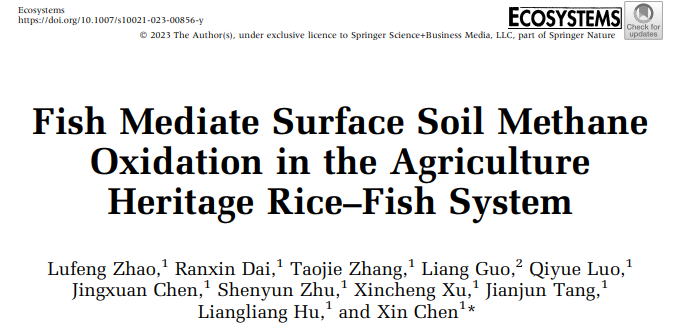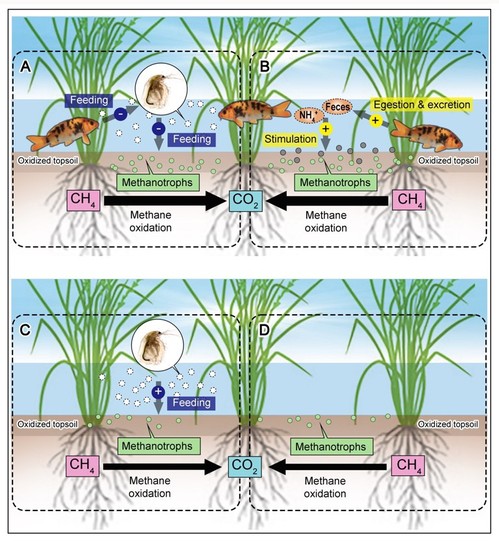
Title: Fish Mediate Surface Soil Methane Oxidation in the Agriculture Heritage Rice–Fish System
Lufeng Zhao, Ranxin Dai, Taojie Zhang, Liang Guo, Qiyue Luo, Jingxuan Chen, Shenyun Zhu, Xincheng Xu, Jianjun Tang, Liangliang Hu & Xin Chen
Abstract
Though the effects of soil microorganisms, plants, and their interaction on methane (CH4) oxidation have been well documented, the roles of animals in this process are less known. We examined how a local common carp, Cyprinus carpio, affects CH4 oxidation in surface soil (that is, soil–water interface) in a 1200-year-old agriculture heritage rice–fish system. A 5-year experiment (field experiment 1) showed that rice yield and soil nitrogen (N) were higher under rice–fish co-culture than rice monoculture. Fish presence did not change CH4 emission but increased CH4 production archaea (methanogens), and aerobic CH4 oxidation bacteria (methanotrophs) and CH4 oxidation. Food component analysis by δ13C and δ15N showed that fish foraged paddy-dwelling organisms (for example, duckweeds, algae, phytoplankton, zooplankton, and zoobenthos). A survey on zooplankton Daphnia showed that fish decreased Daphnia abundance. Mesocosm experiment 1 further indicated that the absence of Daphnia increased methanotrophs and CH4 oxidation. Fish swimming and feeding activity in the paddy circulated the N they excreted and egested. 15N tracing in field experiment 2 demonstrated that N from fish feed was enriched in rice, paddy-dwelling organisms, and fish, while N released by the fish accumulated in soil surface layer (0–1 cm). Mesocosm experiment 2 further indicated that fish-released N increased methanotrophs and CH4 oxidation. 15N labeled-deoxyribonucleic acid (DNA) stable-isotope probing disclosed that fish feces-N was used by methanotrophs. Our work reveals that the fish enhances surface soil CH4 oxidation in the rice–fish system by increasing methanotrophs through feeding interactions that cause trophic cascades and drive N transfer.
Link: https://link.springer.com/article/10.1007/s10021-023-00856-y






